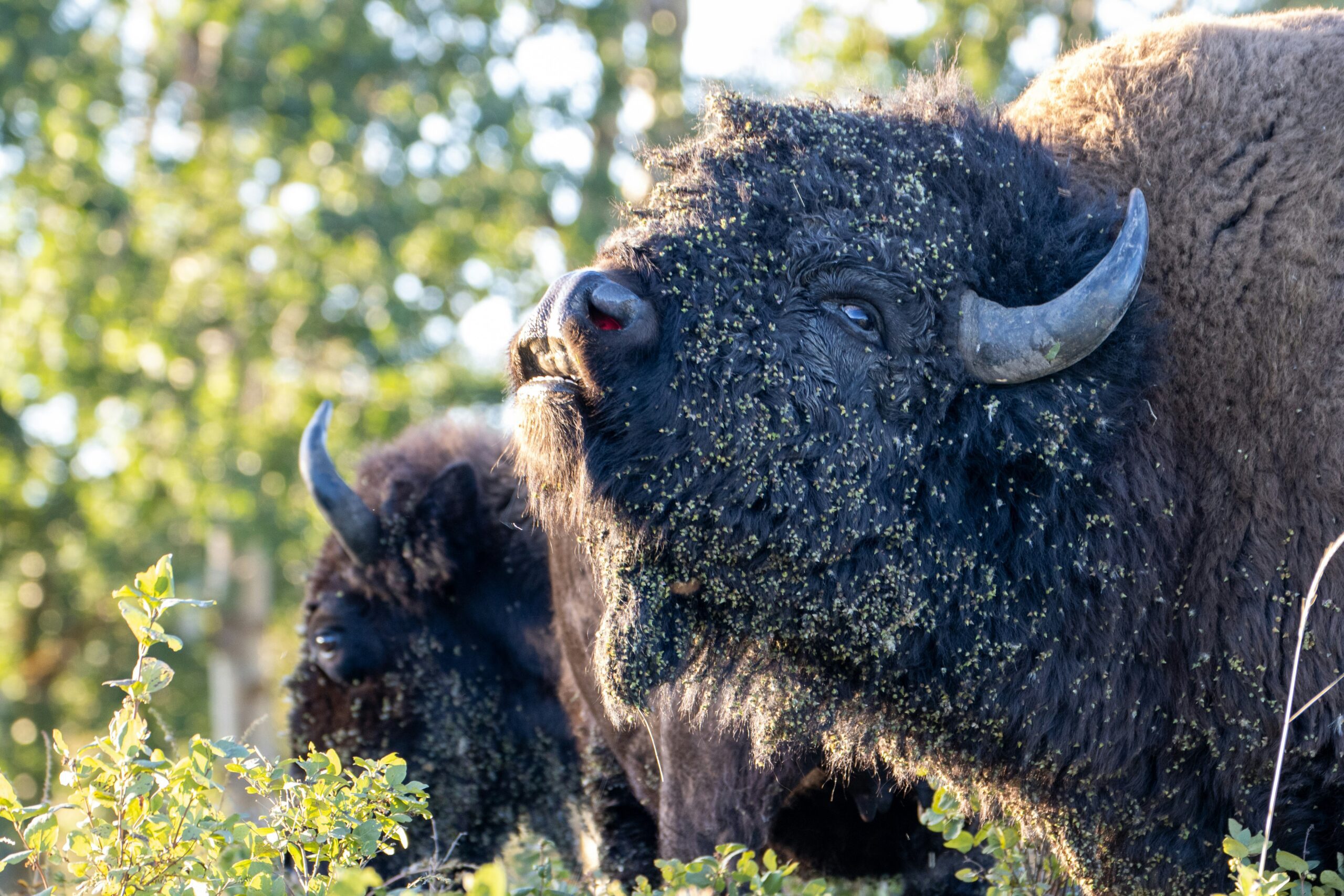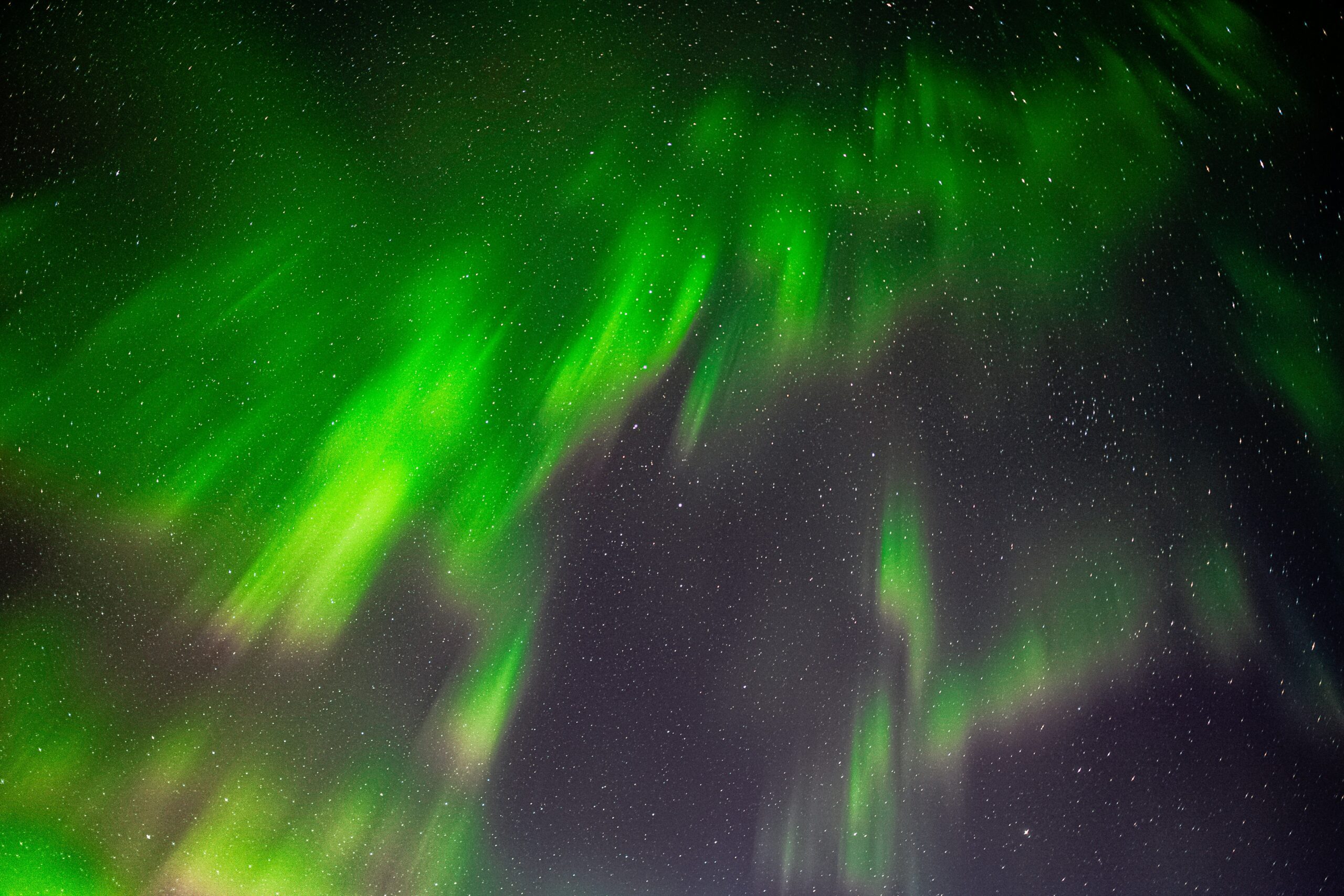Discover Elk Island National Park
Amidst the serene waters of Astotin Lake and the lush boreal forest just east of Edmonton, Alberta, lies Elk Island National Park. Established in 1906, this pristine wilderness sanctuary spans over 194 square kilometers and is renowned for its diverse wildlife, tranquil landscapes, and abundance of recreational opportunities. Elk Island National Park serves as a haven for numerous species, including the iconic plains bison, elk, moose, and over 250 species of birds, making it a paradise for wildlife enthusiasts, photographers, and outdoor adventurers alike.
The park’s rich cultural heritage dates back thousands of years, with evidence of Indigenous presence and traditional land use still visible today. Elk Island National Park offers visitors a chance to connect with the land’s storied past through interpretive programs, guided hikes, and immersive cultural experiences.
Astotin Lake, the park’s centerpiece, beckons visitors with its inviting waters, sandy beaches, and picturesque picnic areas, perfect for a day of relaxation or family fun. The lake also offers excellent opportunities for kayaking, canoeing, and paddleboarding, allowing visitors to explore its tranquil waters and observe wildlife from a unique perspective.
For those seeking adventure on land, Elk Island National Park boasts a network of hiking and biking trails winding through pristine forests, expansive meadows, and wetland habitats. Whether embarking on a leisurely stroll or tackling a challenging trek, visitors are treated to breathtaking vistas and the chance to encounter a variety of wildlife along the way.
Top 3 Facts About Elk Island National Park
01
Bison Population
Elk Island National Park is home to one of the most genetically pure and diverse plains bison populations in the world. The park’s bison population numbers around 400 individuals, contributing to the conservation and restoration efforts of this iconic North American species.
02
Dark Sky Preserve
Elk Island National Park is designated as a Dark Sky Preserve, making it an ideal location for stargazing and astrophotography. The park’s minimal light pollution allows visitors to observe the Milky Way, constellations, and celestial phenomena in all their glory.
03
Indigenous Heritage
The park has a rich Indigenous heritage, with evidence of human presence dating back over 8,000 years. Indigenous peoples, including the Cree, Nakota Sioux, and Métis, have historically inhabited and utilized the lands now encompassed by Elk Island National Park for hunting, fishing, and gathering.
Camping and transportation in Elk Island National Park
How to Get to Elk Island National Park
Elk Island National Park is located in Alberta, Canada, approximately 35 kilometers east of Edmonton. Here are the primary ways to get to Elk Island National Park:
- By Car: The most common way to reach Elk Island National Park is by car. From Edmonton, take Highway 16 (Yellowhead Highway) eastbound. Continue on Highway 16 for approximately 35 kilometers until you reach the park entrance. The park has multiple access points, including the main entrance off Highway 16 and additional entrances off Highways 16 and 216.
- Public Transit: While there is no direct public transit service to Elk Island National Park, visitors can take public transit to Edmonton and then rent a car or join a guided tour to the park. Edmonton Transit Service (ETS) operates bus routes throughout the city, including to major transportation hubs such as Edmonton International Airport and VIA Rail station.
- Guided Tours: Some tour operators offer guided tours to Elk Island National Park from Edmonton or nearby cities. These tours typically include transportation to and from the park, guided activities such as wildlife viewing and hiking, and sometimes meals or snacks. Booking a guided tour can be a convenient option for visitors without access to a vehicle or those looking for a guided experience.
Places to Stay Near Elk Island National Park
Here are some places to stay near Elk Island National Park:
- Astotin Lake Campground: Located within Elk Island National Park, Astotin Lake Campground offers front-country camping with over 70 sites suitable for tents and RVs. Amenities include fire pits, picnic tables, potable water, and flush toilets. Reservations are recommended, especially during peak seasons.
- Elk Island Retreat: This privately-owned campground is located just outside the entrance to Elk Island National Park. Elk Island Retreat offers serviced and unserviced RV sites, tent sites, and cozy cabins. Amenities include showers, laundry facilities, a convenience store, and a playground.
- Miquelon Lake Provincial Park: Situated approximately 25 kilometers southeast of Elk Island National Park, Miquelon Lake Provincial Park offers camping facilities with over 200 sites suitable for tents and RVs. The park features amenities such as showers, flush toilets, picnic areas, and a beach for swimming.
Driving
The park has well-maintained roads and designated parking areas, allowing visitors to access various points of interest, trailheads, and amenities by vehicle.
Public
The park does not operate shuttle or bus services to transport visitors within its boundaries. Therefore, visitors are responsible for their own transportation to explore the park’s attractions and amenities.
Parking
The park provides designated parking areas at various points of interest, trailheads, and amenities to accommodate visitors arriving by car or motorcycle.
Best Time to Go to Elk Island National Park
Summer
Summer is the peak season for visitors to Elk Island National Park, offering long days filled with outdoor activities. The warm weather and clear skies provide ideal conditions for hiking, wildlife viewing, picnicking, and water activities such as kayaking and canoeing on Astotin Lake. The park’s campgrounds and day-use areas come alive with families, campers, and outdoor enthusiasts enjoying the natural beauty and recreational opportunities.
Winter
Winter offers a peaceful and serene experience in Elk Island National Park, with snow-covered landscapes and crisp, clear air. While some trails may be closed or inaccessible during this time, visitors can still enjoy activities such as snowshoeing, cross-country skiing, and wildlife tracking. The park’s frozen lakes provide unique opportunities for ice fishing and ice skating, while cozying up by a campfire or participating in guided winter programs adds to the enchantment of a winter visit to the park.
Spring
Spring is a wonderful time to visit Elk Island National Park as nature awakens from winter slumber. The park’s forests and meadows burst into vibrant greens, while migratory birds return to nest in the wetlands and shorelines. Visitors can enjoy pleasant temperatures, budding wildflowers, and the chance to spot newborn wildlife such as elk calves and bison calves.
Fall
Fall is a magical time to visit Elk Island National Park as the landscape transforms into a kaleidoscope of autumn colors. The park’s forests and wetlands are ablaze with hues of red, orange, and gold, creating a stunning backdrop for hiking, photography, and wildlife watching. Visitors can also witness the annual elk rut, as bull elk engage in dramatic displays of dominance to attract mates.
Must-See Attractions
Helpful Tips: Making the Most of Your Adventure to Elk Island National Park
Plan Ahead
Before your visit, check the park’s website for information on current conditions, trail closures, and any alerts or advisories. Consider creating an itinerary based on your interests and the activities you’d like to experience during your visit.
Pack Essentials
Be sure to pack essentials such as water, snacks, sunscreen, insect repellent, and a first aid kit. Dress appropriately for the weather and wear sturdy footwear for hiking or exploring the park’s trails.
Respect Wildlife
Elk Island National Park is home to a variety of wildlife, including bison, elk, deer, and numerous bird species. Keep a safe distance from wildlife and refrain from feeding or approaching them. Remember to observe wildlife from a distance and never attempt to approach or feed them.
Check for Fire Bans
During dry periods, fire bans may be in effect in Elk Island National Park to prevent wildfires. Check for any fire bans or restrictions before starting a campfire or using a portable stove, and adhere to park regulations regarding fire safety.


Frequently Asked Questions about Elk Island National Park
To plan a successful camping trip to Elk Island National Park, you’ll want to reserve a campsite through the Parks Canada reservation system. It’s important to book early, especially in peak seasons, to secure your spot. Check the weather, pack accordingly, and be prepared for the great outdoors.
Visitors to Elk Island National Park often engage in hiking, wildlife viewing (keep an eye out for bison and elk!), birdwatching, and stargazing. In winter, you can enjoy cross-country skiing and snowshoeing on the park’s trails.
Elk Island is about a 35-minute drive east of Edmonton. The best way to get there is by car since there is no public transportation directly to the park. If you don’t have a car, consider renting one for the day to make the most of your visit.
Yes, there are fees for visiting Elk Island National Park. An adult entry costs $7.90, with special rates for seniors and groups. These fees contribute to the maintenance of the park, including trails and visitor services. Remember, kids can explore for free!
Elk Island National Park is celebrated for its rich wildlife, including its famous conservation area for bison. Its proximity to Edmonton makes it an accessible nature getaway, offering a diverse range of activities suitable for everyone from dedicated hikers to families looking for a leisurely picnic spot.
Yes, Elk Island National Park offers a network of hiking trails that wind through forests, wetlands, and grasslands. These trails vary in length and difficulty, catering to hikers of all levels. Popular trails include the Amisk Wuche Trail, Tawayik Lake Trail, and Hayburger Trail.